Initial creation: 3-10-2024 | Last updated: 30-12-2024 Head back to the main page Head back to the 2005-ANSPO hub
Russian Supreme State
Russian Supreme State
Российский Верховный Государственный
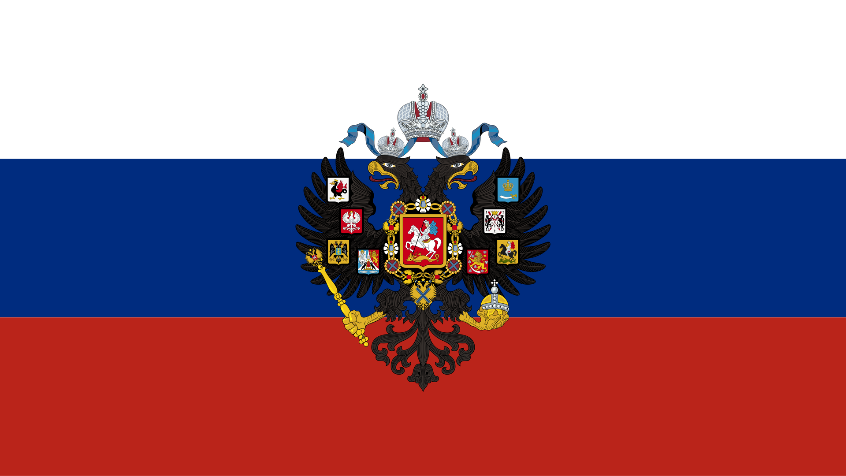
Flag
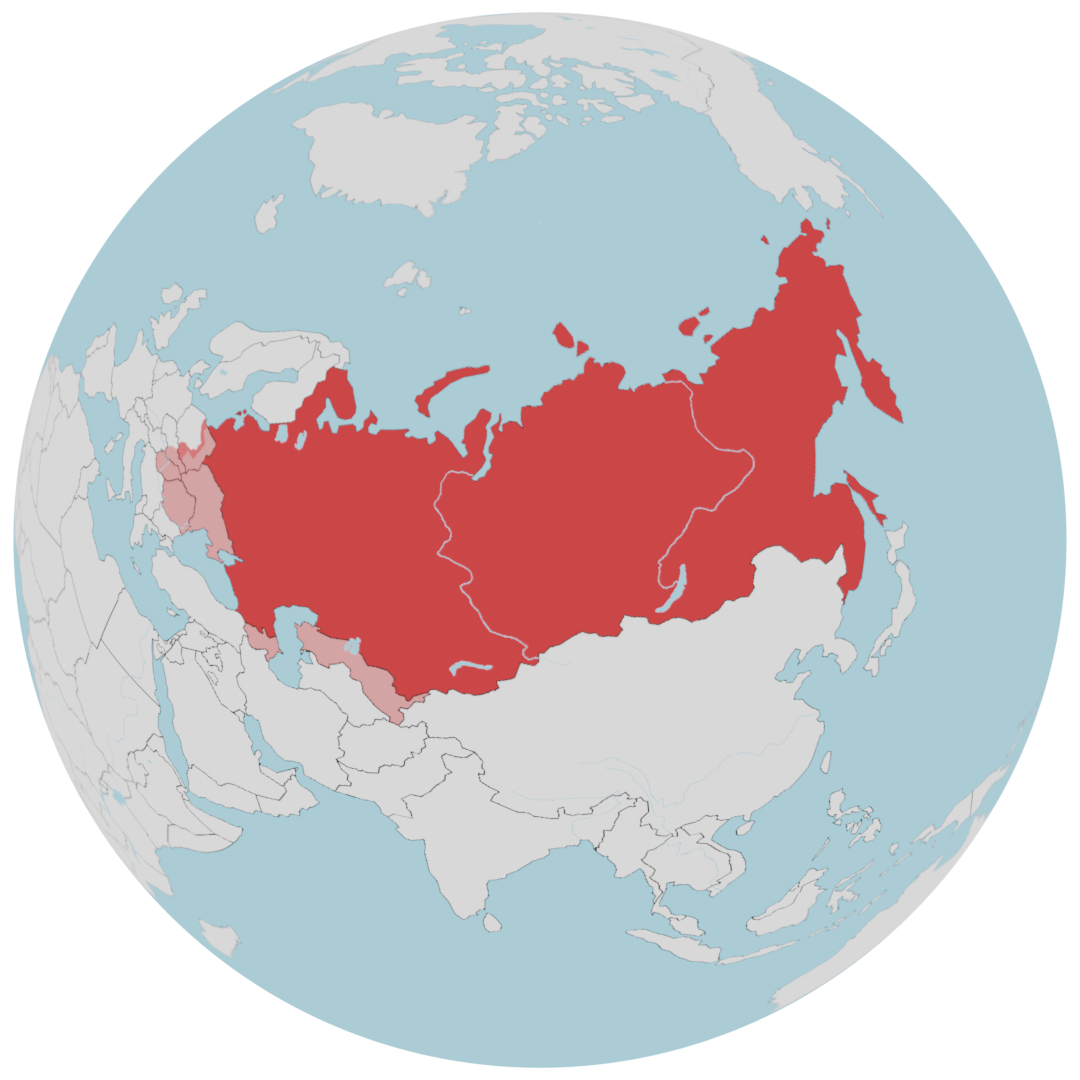
National map
| Capital | Moscow |
|---|---|
| Largest City | Moscow |
| Official Languages | Russian |
|---|---|
| National Languages | Russian, Estonian, Latvian, Lithuania, Belarusian, Kalmyk, Georgian, Ossetian, Tatar, Bashkir, Nenet, Komi |
| Religions (2005) | 84% Christianity 3% Islam 8% Other 5% Athiest |
|---|
| Demonyms | Russian |
|---|
| Government | Federal semi-presidential republic under a totalitarian dictatorship |
|---|---|
| President | Rovin Alleskyi |
| Population | 64.5 million |
|---|
| Currency | Russian Ruble (₽) |
|---|---|
| Date format | dd/mm/yyyy |
| Calling code | +7 |
| TSO 3166 code | RU |
| Internet TLD | .ru |
The Russian Supreme State, in native Russian 'Российский Верховный Государственный', or simply Russia or RSS is the largest nation on planet Earth, located in Eastern Europe and Northern Asia, consisting of nine 'Republics', namely Russia, Kazakhstan, Tajikistan, Kyrgyzstan, Georgia, Belarus, Lithuania, Latvia, and Estonia. Russia's capital and largest city is Moscow. Russia is also the founder and leader of the Kyiv Pact. The nation is young, having been born out of the Russian Defense Command in 1998 during the Raspatsya, making it eight years old as of 2005.
History
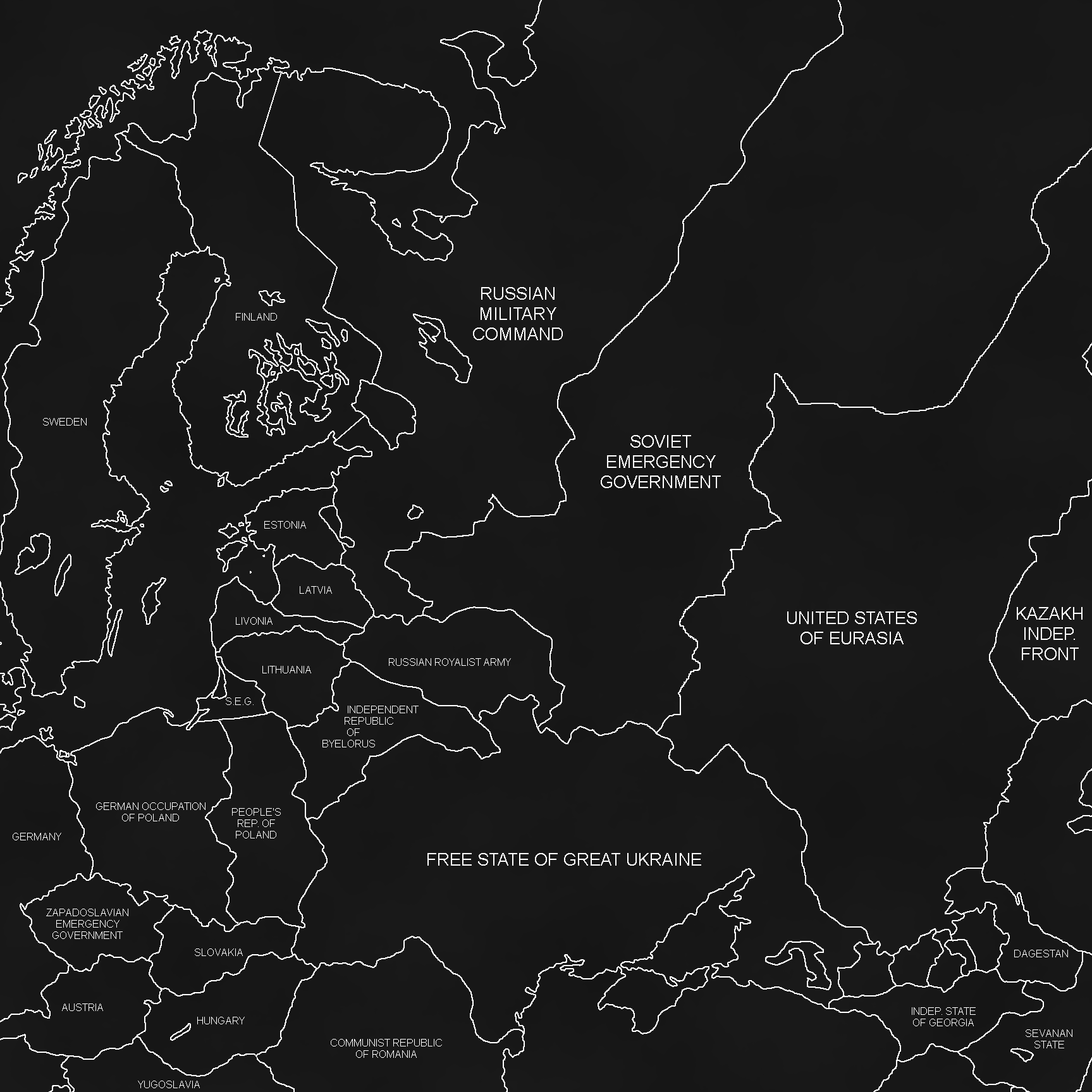
Map of East Europe during the Raspatsya (1997)
Formation and the Raspatsya
The Russian Supreme State came into existence postceding the victory of the Russian Defense Command (RDC) in the Raspatsya, on January 27th, 1998. Rovin Alleskyi, who had led the RDC through the Raspatsya, declared himself as president of the Russian Supreme State shortly after, on the 6th of February. Though Russian victory wasn't officially established until the Battle of Tiblisi on February 25th of the same year. Shortly after the Raspatsya ended, the RSS continued to deal with domestic counterinsurgencies in Ukraine and the Caucasus, which would frequently commit terrorist attacks in major regional cities such as Sevastopol, Kyiv, and Tiblisi. In response to continued attacks, Alleskyi ordered the creation of a semi-autonomous satellite state in Ukraine, as well as the creation of autonomous local governments in the Caucasus called 'states'. The states that were created - and still exist to this day - were Ossetia, Dagestan, and Chechnya.
Post-Raspatsya
Immediately after the war, Russia was still unstable as it had to perform a complete overhaul of the previous Soviet bureaucratic system while simultaneously dealing with continuous terror attacks from regional insurgencies, while also dealing with managing the satellite states. Alleskyi implemented "temporary martial law" throughout all of the Russian Supreme State on January 29th, 1998 to keep stability in the country lower. This did not work, as by April of the same year, civil unrest was still high, as stores and factories were being vandalised, bombed, and broken into regularly. On June 17th, he ordered the creation of the Ministry of Internal Affairs and Security (IAS), in native Russian 'Министерство внутренних дел и безопасности'.
IAS is now known to be the Russian equivalent of the ASC. It's initial goal was to spy on and track down dissenting civilians and detain them, before either releasing them, sending them to a detention facility, or permanent habitation in a Siberian gulag facility. Throughout 1998, civil unrest and instability in the RSS greatly decreased. However, the sheer amount of people being detained started to result in a shortage of gulags. On October 20th 1998, Alleskyi ordered the construction of at least 400 gulag facilities throughout the Siberian, the Far East, and Ural regions by the year 2000. This quota was halfway met sometime in March of 1999, and by then, over a million people had been detained by the IAS.
21st Century (2000-2005)
After the Russo-American Nuclear Exchange, many of Russia's major population centers were completely obliterated, including Riga, Minsk, Sevastopol, Rostov on Don, Volgograd, Saratov, Tolyatti, Samara, Arkhangelsk, Kazan, Ulyanovsk, Ufa, Chelyabinsk, Tyumen, Yekaterinburg, Omsk, Novosibirsk, Irkutsk, Krasnoyarsk, Vladivostok, Astana, and Aktobe. These cities were nicknamed "The Cratered Cities". On April 9th, 2000 Rovin Alleskyi ordered the creation of the Ministry of Post-Nuclear Redevelopment (PNR), in native Russian "Министерство постъядерного восстановления", which was appointed to rebuilding the Cratered Cities, along with modernising them and preparing infrastructure for mass-transit. However, PNR was critically underfunded, leading to key figures in the PNR board opting to only redevelop cities in West Russia, including Sevastopol, Riga, Minsk, Rostov on Don, Volgograd, and Kazan.
The redevelopment efforts themselves started slow, but have been accelerating as of 2005. Between the ministry's creation and mid-2003, public opinion on PNR became unfavorable towards the ministry, as it had not constructed any buildings or infrastructure by that time. Unbeknownst to the public, the PNR had been carefully planning the Metropolitizatsiya; an effort to construct large housing complexes, office skyscrapers, and mass transit infrastructure in Sevastopol, Riga, Minsk, Rostov on Don, Volgograd, and Kazan. Mass construction began from August 2003 onward. As of 2005, 23 skyscrapers have been built across the cities mentioned, along with 89 housing complexes, 47 metro stations, 26 public parks, and 6 shopping centers. Construction was initially delayed due to concerns about lead insulation to protect from the still lingering radiation in the Cratered Cities, however official building regulations were ratified by the PNR in January of 2002, meaning planning on actual redevelopment could begin.
In 2000, Russia's economy began to decline rapidly due to efforts to 'restore the Russian economy to normal operation' despite the fact that 75% of the nation's population no longer existed after the Russo-American Nuclear Exchange. Alleskyi, being a military leader with little consideration for morality, empathy, or happiness, implemented the New Conditions of Labour on August 9th 2000. The New Conditions of Labour reduced the minimum working age to 6, the minimum wage to 40 rubles an hour with minors getting 17 rubles an hour, the maximum working hours to 11 hours, the maximum working days per week to 6, and declaring it illegal to be unemployed for a period longer than three months after the age of 14. The lack of manpower was partially rectified due to this new policy, however the majority of Russian citizens were against the New Conditions of Labour. This escalated into protests nationwide, however these were all put down via SWAT and local police forces. The protests would persist, and on April 14th 2001, a new law that would declare it illegal to protest or rebel against the policies of Rovin Alleskyi was passed, with punishment being variable, from mandatory menial labor to imprisonment in a gulag facility depending on the actions of said person during the protest.
Images
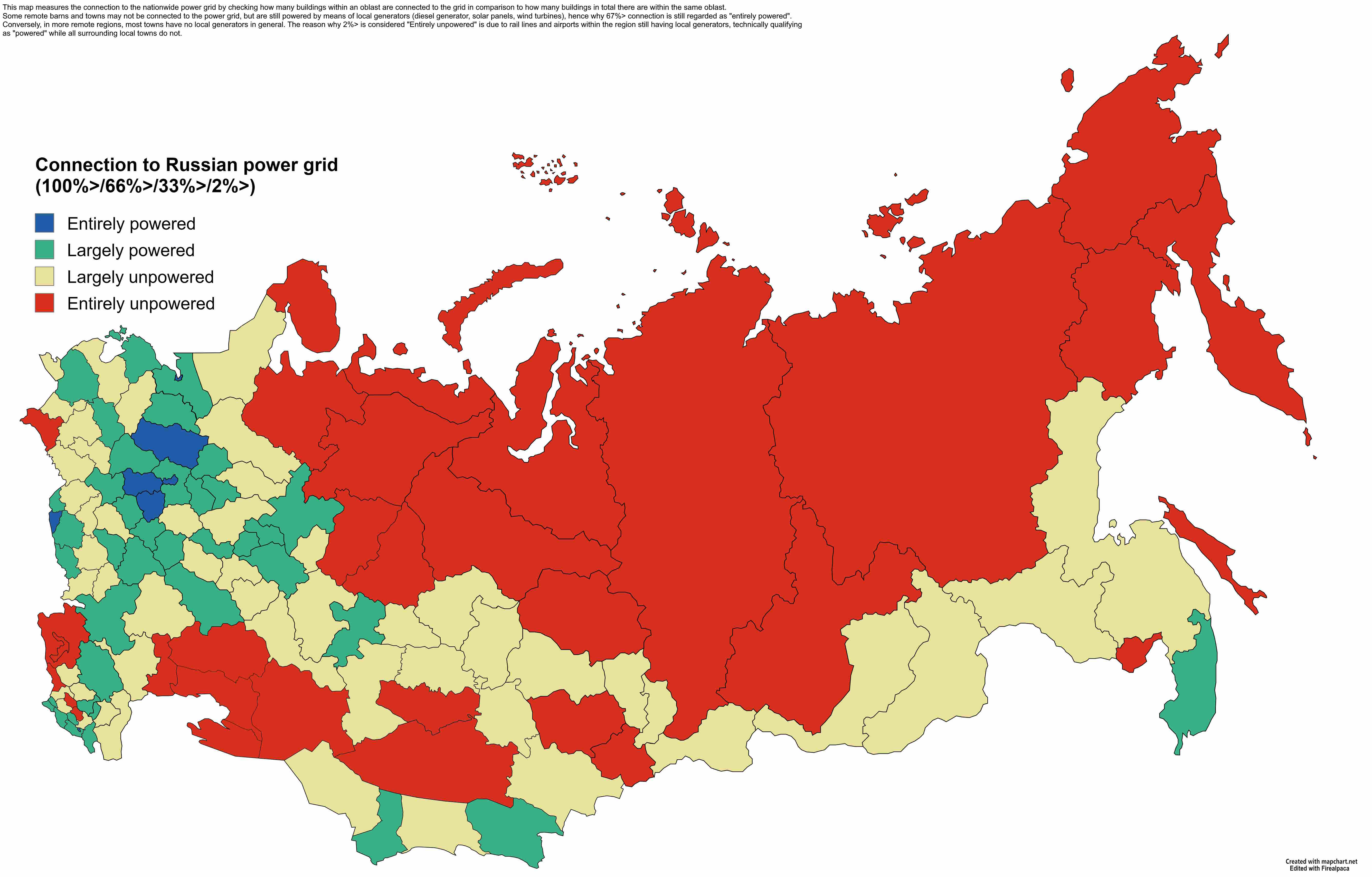
Map of power grid connection in the RSS in 2005.
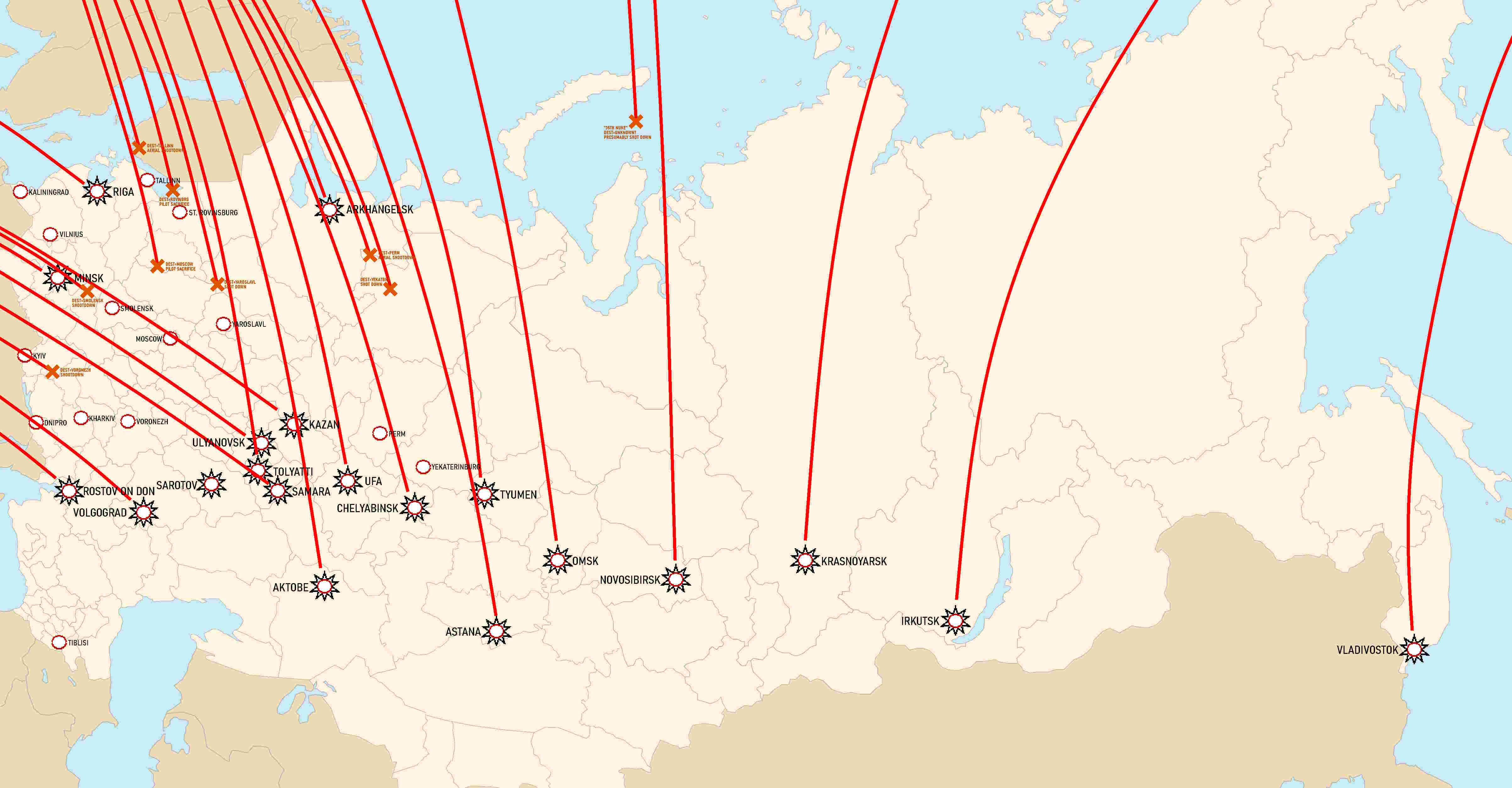
Map of cities in the modern day RSS targeted by Manhattan Pact ICBMs and IRBMs during the Russo-American Nuclear Exchange in 1997. 2005 borders are shown.
